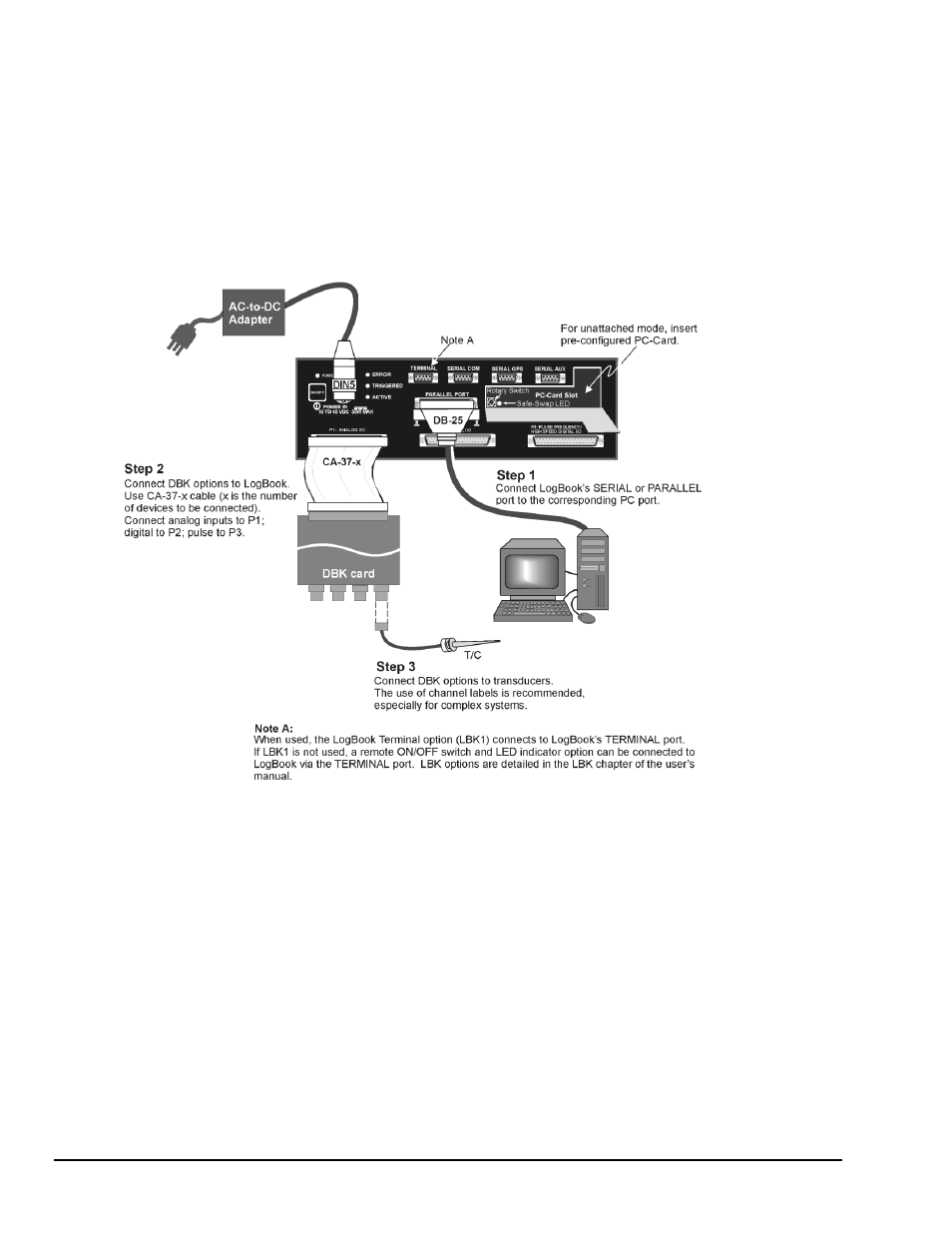Measurement Computing LogBook Series User Manual
Page 39

QS360-
6
LogBook/360 Quick Start Guide
Connecting the LogBook/360 to the PC, External DBKs, and to Power
The following hardware-connection figure and procedure are generic; details vary with system complexity. For
“unattached mode,” a pre-configured PC-Card is inserted in the PC-Card slot, and no connection to a PC is made.
The following figure illustrates the “attached” mode.
Note: Connecting LogBook/360 to a PC applies to the “attached mode” only. Many applications will make use of
three internal DBK cards only, having no need to attach external DBK cards or modules as discussed in the
following text.
LogBook/360 System, “Attached Mode,” Basic Connections
Note: Rear panel connections may be made via terminal blocks, as discussed in the previous section,
Card Drawer Setup
.
After verifying that all equipment power is off, hardware connection typically proceeds as follows.
Refer to the above figure as needed.
1. Connect the LogBook/360 to the host PC. There are four ways for LogBook/360 to communicate
with the PC. These are: parallel port, serial port to serial port, serial port to USB, and manual
transportation of the PC-Card. Note that the parallel port method is represented in the previous
figure.
a) Parallel port to parallel port – If using the parallel port, connect a DB25male to DB25female parallel
cable [e.g., CA-35-2 or CA-35-6 (2ft. or 6ft. respectively)] to PARALLEL PORT on LogBook/360, and to
the corresponding parallel port on the host PC. When this method is used, the PC must be set to the ECP
mode. See ECP Parallel Port, page QS360-9 for additional information.
b) Serial port to serial port – If using the serial port, use a null modem serial cable (CA-47) to connect the
DB9 SERIAL PORT on LogBook/360 to the corresponding DB9 serial port on the host PC.
Step 4
Connect the LogBook’s DIN5 power in connector to the AC adapter
and connect the adapter to a suitable power outlet. Note that other
power options are discussed in the DBK Basics section of this
manual.
